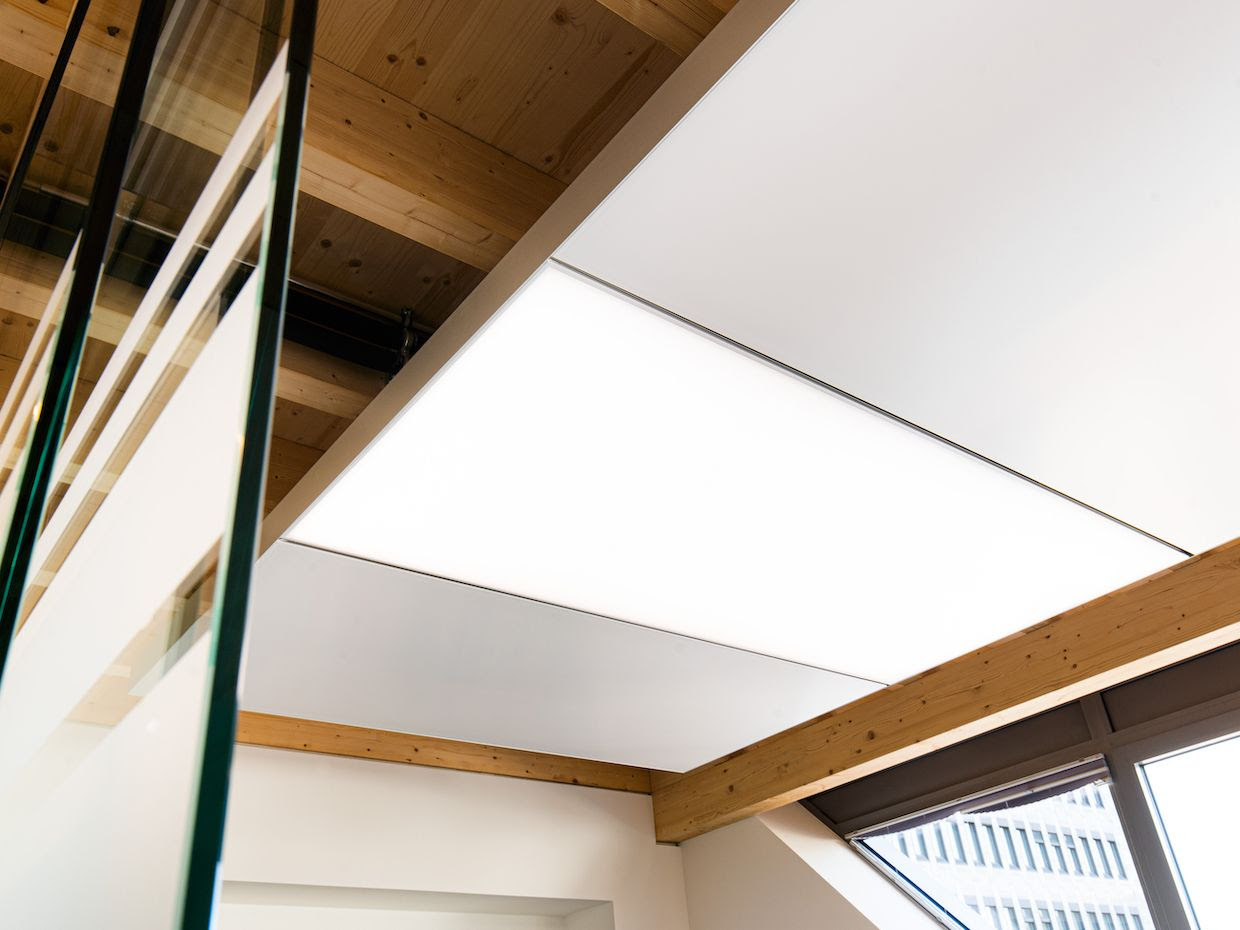|
|
22 SEP 2022 • SUSTAINABILITY
WILL COOLING CEILINGS MAKE AIR CONDITIONING OBSOLETE?
Alexander Buff, founder and CEO of Interpanel, is set to change our notion of temperature control and the practice of cooling interiors. He talked with us about the potential of his unique dew-point independent radiant ceiling, and how it challenges and supersedes air conditioning, allowing for more sustainable temperature control.
Your radiant ceiling operates according to a different principle than air conditioning and as a cooling technology, it constitutes a category of its own. Why then do you have an issue with the term air conditioning?
ALEXANDER BUFF: Since the development of our radiant cooling ceiling and its market introduction, we have witnessed an increasing openness in the construction industry in regard to the adoption of novel solutions, as long as they provide added value to the clients and are convincing in economic and technical terms. At the same time, we have noticed how air conditioning is omnipresent, not least due to the dominance of the English term. Air conditioning is generally used to communicate the cooling of interior spaces, as if it was the only cooling principle that exists. This is unfortunate. Cooling ceilings, by contrast, are well known but still relatively rarely applied – even though they are superior to conventional air conditioning in several ways.
 Alexander Buff.
Alexander Buff.
In what ways is radiant cooling superior to air conditioning?
For one, water-based radiant cooling and heating is more efficient than convective air conditioning which circulates huge volumes of air. This requires a lot of energy from fans, because air is a poor vehicle for thermal energy. We don’t heat the bathroom with a hair dryer either – but use a static radiator that permanently emits heat into the room instead of moving air around the room. This static principle is also used for the Interpanel radiant ceiling. Due to the absence of air movement, it causes no draft and requires neither filters nor ventilation. It also works in complete silence. In fact, being a passive and silent system, clients sometimes ask us for some proof that our ceiling works once it has been installed. Compared to air conditioning, our cooling sail allows energy savings of up to 60 per cent while offering a healthier room climate. Due to its dew-point independence, it can be used in combination with natural window ventilation.
You have realized applications in retail, healthcare, industry and office spaces, each of them with specific requirements as to temperature control and comfort. How can you cater to your clients’ different needs?
Cooling capacity and comfort requirements vary according to different users and situations. German work environment regulation specifies a standard temperature of 26 degrees at 32 degrees outside. Some clients simply want to fulfil this norm while other clients, such as those in industry, specify 24 degrees for their interiors all summer, no matter the outside temperature, still others haven’t even thought about the temperature they want. As manufacturer and system provider we help our clients to transmit their specific requests into a corresponding energy use and temperature profile by considering their minimum-maximum requirements, official regulations and demands on comfort.

 Interpanel's cooling sails offer energy savings of up to 60 per cent compared to air-conditioning systems.
Interpanel's cooling sails offer energy savings of up to 60 per cent compared to air-conditioning systems.
This also means taking future events into account – different tenants and building uses or the changing climate. In order to provide reliable projections of the future, we perform coupled energy and thermal building simulations which map the building’s operation in the future. We can for instance simulate the climate of 2050 for any building.
Still, comfort climate goes beyond mere temperature control. It also depends on air quality, acoustics and light and other factors such as personal preferences. For thermal comfort, requirements vary according to the activity level at work but also individual physical constitution and gender. Let’s not forget that even within the norm, you can never obtain 100 per cent satisfaction. We seek to maximize individual comfort by offering the possibility for zonal cooling and heating and the integration of circadian lighting and high absorbing acoustic properties.
Besides operational electricity savings, how else can your cooling panel assist the interior and construction industries in reducing carbon emissions?
Our system helps saving resources in more than one aspect. Besides the electricity savings you mention, its passive operating principle means that it requires no maintenance and is long-lasting. Due to its modular design each single component can be replaced. The ceiling sail is separate from the structural parts of the building and can be reused in different constellations or even buildings when the owner’s or tenant’s requirements change. These are significant aspects from a user’s point of view.
 The cooling ceilings also help facilitate energetic building redevelopment.
The cooling ceilings also help facilitate energetic building redevelopment.
At yet another scale, we aim at establishing Interpanel as a prefabricated standard that provides cooling, heating, workspace lighting and sound absorption in one solution. With our easy-to-install system, any building can be upgraded within short time. As such it may contribute to more efficient processes in construction, allowing energetic building redevelopment at a serial scale. In coming years, there will be a strong trend towards building redevelopment, one we already witness today. If we want to reach carbon neutrality by 2050, we have to redevelop existing buildings rather than constructing new ones. Think of New York, where one million office and commercial buildings await energetic upgrading. Individual solutions and processes on the building site require a lot of skilled work. This sheer volume can only ever be covered in time with scalable and standardized solutions like ours.











-thumb.jpg)

No comments:
Post a Comment